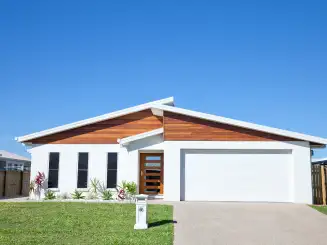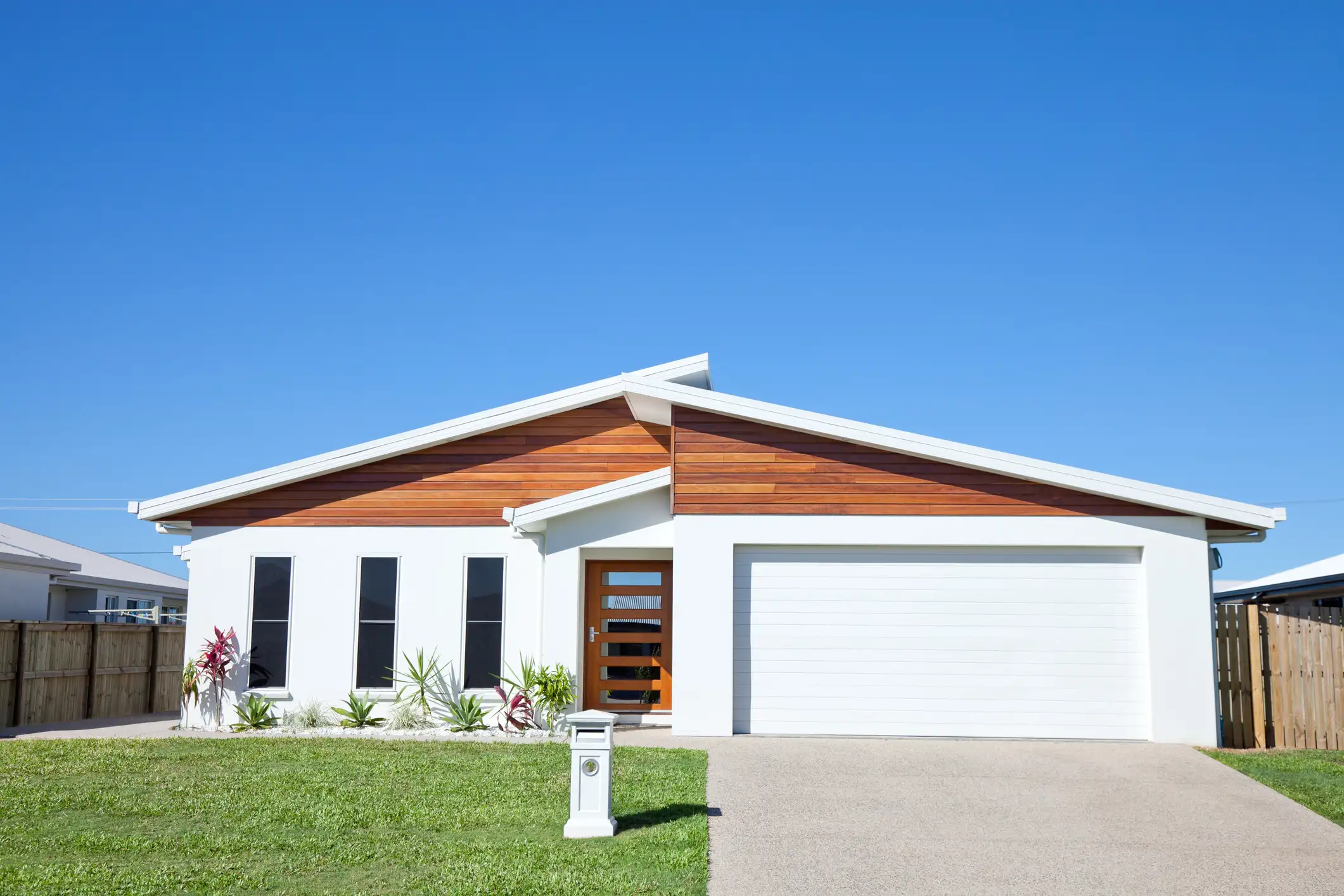What is a fixed-rate mortgage?
The definition of a fixed-rate mortgage is simple: your mortgage interest rate and the principal and interest portion of your monthly payment stay the same for the life of the loan. Whether you choose a 15- or 30-year mortgage, your rate won’t change, making it easier to plan and budget long-term. That kind of consistency can be a huge plus for long-term planning and budgeting.
Why a fixed-rate is best for some buyers
- Predictable loan payments over the term of the loan
- Protection from rising mortgage interest rates
- Easier budgeting over the life of the loan
Fixed-rate loans are ideal when you want consistency in payments, especially if interest rates rise.
If your priority is locking in a rate long-term, a fixed-rate loan can help mitigate the risk of future increases.


Fixed doesn’t mean frozen
Even with a fixed-rate loan, your monthly mortgage payment can still change. That’s because most mortgages include property taxes and homeowners insurance, which are paid through an escrow account. If your taxes or premiums increase, your escrow payments—and therefore your monthly bill—may go up, too.
What is an adjustable-rate mortgage (ARM)?
An ARM (sometimes called a variable rate mortgage) is a home loan with an interest rate that can change over time. Most ARMs start with a lower introductory rate, typically set for 5, 7 or 10 years. After that period, your rate adjusts at regular intervals based on market conditions.
This structure is often described using a format like 5/1 ARM—but what does that mean?
- The “5” refers to the number of years your rate stays fixed at the beginning.
- The “1” means that the rate will adjust once per year after the fixed period ends.
How does an ARM work?
After the initial fixed period, your interest rate resets based on two components:
- Index: A market-based rate, such as the Secured Overnight Financing Rate (SOFR) or the 1‑Year Treasury Rate, maintained by the U.S. Treasury.
- Margin: A fixed rate set by your lender (e.g., 2.25%).
New rate = index + margin
For example, if SOFR is 4.00% and the margin is 2.25%, your new rate would be 6.25%.
ARMs also include rate caps that limit how much your interest rate (and monthly payment) can increase at each adjustment and over the life of the loan.
Check current mortgage rates to see how today’s market may affect your future payments.
Why an ARM is best for some buyers
ARMs aren’t for everyone, but for certain buyers they can be a smart, cost-effective choice. If your plans are short-term, or your financial situation is likely to change, the flexibility of an ARM could work in your favor.
- Lower initial rate: You’ll typically pay less initially compared to a fixed-rate loan.
- Smart for short stays: If you plan to move or refinance before the rate adjusts, you could save thousands.
- Built-in flexibility: A solid option if you anticipate your income to grow or your housing needs to change.
Want to dig deeper? The Consumer Financial Protection Bureau offers a helpful guide to how ARMs work.
Key differences between fixed vs adjustable-rate mortgages
| Feature | Fixed | ARM |
|---|---|---|
| Interest rate stability | Fixed for the entire loan term | Fixed during intro period, then adjusts annually |
| Monthly payment predictability | Payments stay the same every month | Payments may increase or decrease after intro period |
| Intro rate range | Typically higher than ARM rates | Typically lower during intro period |
| Risk of increase | None—rate stays the same | Moderate to high, depending on market changes |
| Ideal borrower profile | Buyers planning to stay long-term or prioritize stability | Short-term buyers, frequent movers or those expecting higher income |
| Best use case | Long-term homeownership and consistent budgeting | Selling or refinancing before the rate adjusts, maximizing early savings |
Pros and cons of each loan type
No mortgage is one-size-fits-all. Both fixed-rate and adjustable-rate loans come with unique benefits and trade-offs. Here's a breakdown to help you weigh your options based on your financial goals and homeownership timeline.
Pros and cons of a fixed-rate mortgage
Fixed-rate mortgages are a popular choice for buyers who value long-term stability and predictable payments. Here’s what to consider:
| Pros | Cons |
|---|---|
| Interest rate stays the same over the life of the loan. | Higher starting interest rates than ARMs. |
| Predictable monthly payments make budgeting easier. | Less flexibility if you move or refinance within a few years. |
| Offers stability and peace of mind, especially for long-term stays. | May cost more overall if you don’t keep the loan long-term. |
| Easier to plan your finances over time. | Could miss out on savings if market rates fall. |
Pros and cons of an adjustable-rate mortgage
ARMs can offer more savings early on—but can come with greater uncertainty down the road. They’re best suited for buyers with short-term plans or flexible budgets.
| Pros | Cons |
|---|---|
| Lower initial interest rate and monthly payments. | Monthly payments can increase after the fixed period ends. |
| Can save money if you sell or refinance before the rate adjusts. | Harder to budget long-term due to rate variability. |
| Possible benefit if interest rates go down. | Risk of payment shock if rates rise quickly. |
| Often ideal for short-term homeowners or investors. | Complex terms can be confusing for first-time buyers. |
When to choose an adjustable-rate vs. fixed-rate mortgage
Choosing between a fixed-rate and an adjustable-rate mortgage isn’t just a numbers game. It’s about how your mortgage fits into your life.
PRO TIP
If you plan to move, refinance or earn more in the next few years, an ARM might help you save up front. But if you want stability and peace of mind, a fixed-rate loan may be the right fit.
Potential buyer scenarios
Still not sure which mortgage is the right fit? Sometimes it helps to see how different loan types work for different lifestyles. Here are a few real-world examples that show how your plans, timeline and financial goals can influence the best mortgage choice.
The forever home family
Profile: Vanessa and James are expecting their second child and just bought a four-bedroom house in a good school district. They plan to raise their family here and stay for at least 15 years.
Best fit: Fixed-rate mortgage
Why: With a long-term stay in mind, they want predictable payments and a stable budget. A fixed rate gives them peace of mind, year after year.
The frequent mover
Profile: Nina is a corporate strategist who relocates every three to five years. She’s buying a condo she doesn’t plan to keep long.
Best fit: ARM
Why: Nina can enjoy the lower starting rate and likely sell before the ARM adjusts, keeping her costs lower while she owns the home.
The strategic investor
Profile: Taylor is buying a duplex and planning to live in one unit and rent out the other. They expect to hold the property for three to five years before upgrading to a larger home.
Best fit: ARM
Why: The lower intro rate helps keep expenses low in the early years, improving rental income margins. Since Taylor plans to sell or refinance within a few years, they’ll likely avoid any significant rate increases.
The downsizing retirees
Profile: Maria and Luis just retired and are moving into a smaller home. Their income is fixed, and they want to avoid financial surprises.
Best fit: Fixed-rate mortgage
Why: A fixed-rate loan locks in their payment amount for the life of the loan, giving them budgeting stability during retirement.
Looking for more help deciding? Check out the CFPB Interest Rate Explorer for more tools and insights.







